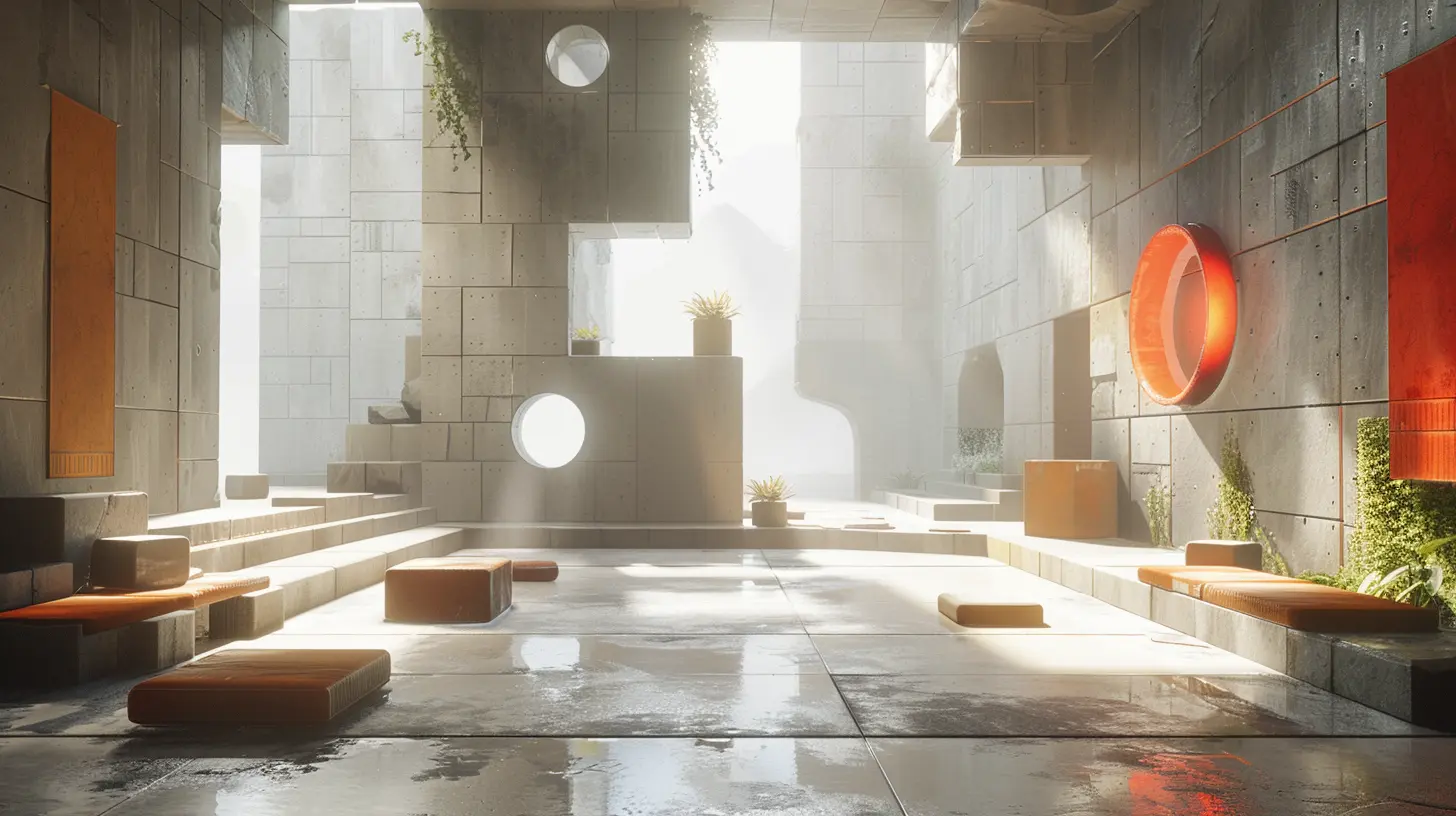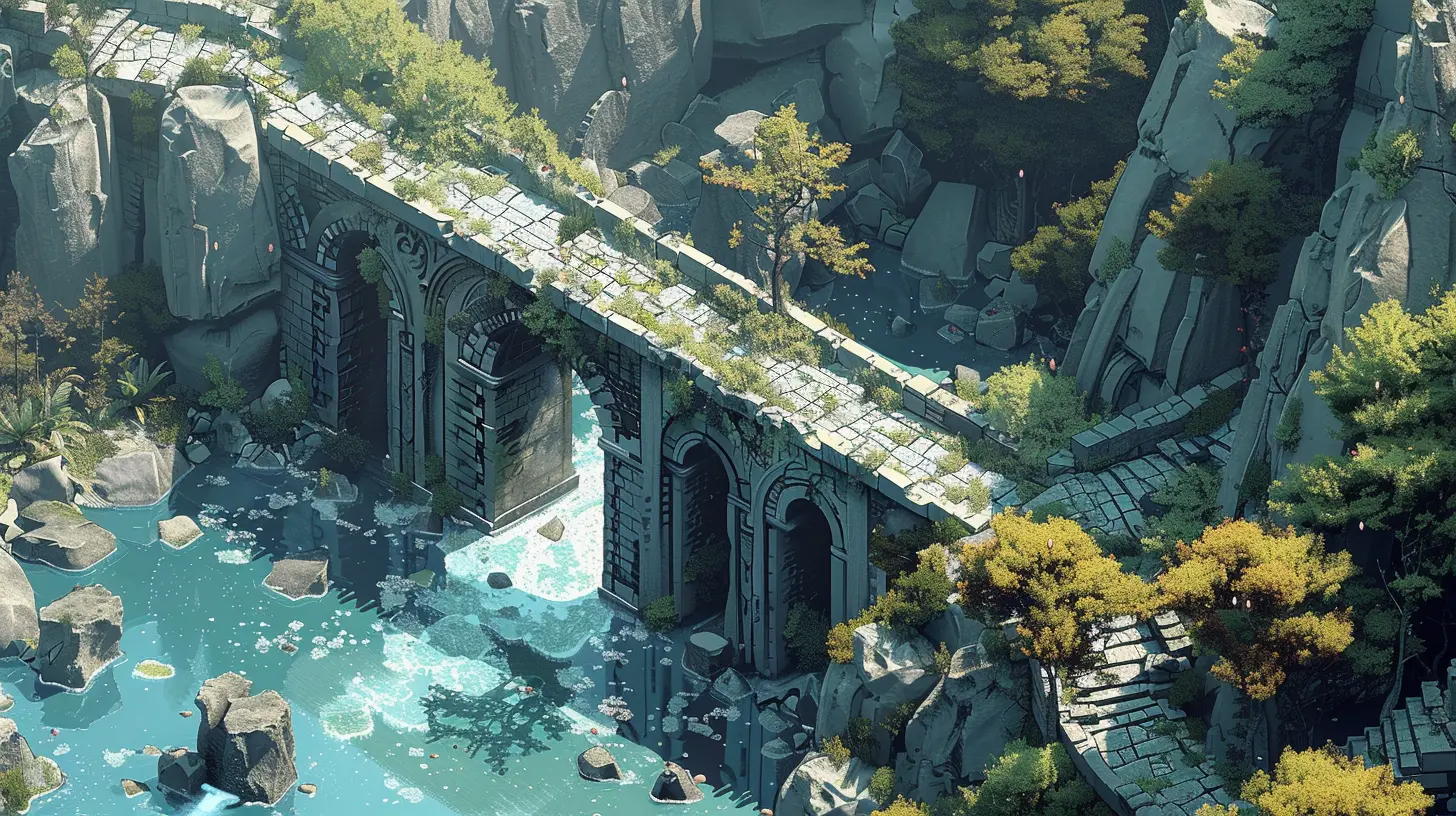Designing for Player-Controlled Chaos: The Beauty of Procedural Systems
23 May 2025
Let’s be real for a second—video games are at their best when they throw a curveball and let us, the players, steer the ship straight into mayhem. You know what I’m talking about: that sweet spot where you’re not entirely sure if you’re a genius gamer or just stumbling your way into moments of brilliance. And at the heart of this beautiful mess lies the magic of procedural systems.
If you're sitting there like, “Wait, what even is a procedural system?” don’t worry—think of it as the game’s way of rolling the dice, giving us new and unpredictable experiences every single time. In this article, we're going to dive right into the madness of player-controlled chaos and why procedural systems are the unsung heroes of modern gaming. So grab a coffee (or energy drink, wink wink), and let’s geek out.
What Are Procedural Systems, Anyways?
Okay, imagine this: you’re baking cookies, but instead of measuring out all the ingredients and painstakingly following a recipe, you throw flour, sugar, and chocolate chips into the air and hope they land in the bowl just right. That’s procedural generation in a nutshell! It’s the process of creating content dynamically using algorithms rather than manually building everything from scratch.In gaming, procedural systems generate levels, enemies, loot, or even entire worlds on the fly. One playthrough, you’re running through a forest filled with friendly creatures; the next, you’re being chased by an army of mutant squirrels. You never know what you’re going to get, and that’s what makes it so darn fun. It’s chaos, yes—but it’s the good kind of chaos.
Why Gamers Love Chaos (Yes, Even When It Wrecks Us)
Let’s face it: gamers are a weird bunch. We love feeling in control, but we also adore it when everything goes off the rails. Why? Because “predictable” gets boring fast. Nobody sits there saying, “Wow, that perfectly linear level design was truly exhilarating.” No, the stuff that sticks with us are the moments where things explode (sometimes literally).Procedural systems feed this hunger for unpredictability by creating situations you couldn’t have written in a script if you tried. That random chest that gave you an overpowered bazooka right before a boss fight? Chef’s kiss. Or that time you accidentally stumbled into a cave of enemies way above your level? Frustrating, sure—but admit it, you were telling all your friends about it afterward.
The Building Blocks of Procedural Mayhem
So, how do developers even begin to design chaos? Surprisingly, it’s not about adding chaos—it’s about giving players the tools to create it themselves. Here are the key ingredients that make procedural systems shine:1. Randomization (But Make It Smart)
Randomization is the bread and butter of procedural systems, but it’s not about picking things willy-nilly. It’s guided randomness. Think of it like a really good stand-up comedian who seems to improvise but has a solid structure beneath the jokes.For example, in rogue-like games like Hades or Dead Cells, levels are procedurally generated yet still flow naturally. You’re not wandering aimlessly in a Minecraft-sized void; you’re exploring areas packed with enemies, traps, and treasures—all placed with just enough intention to make it fun, not frustrating.
2. Emergent Gameplay
Here’s where things get spicy. Emergent gameplay is when interactions between game systems (and the player) create scenarios the developers never planned. It’s like setting up a domino run but letting someone else decide where to push the first piece.Take The Legend of Zelda: Breath of the Wild, for example. Accidentally set fire to the grass while fighting enemies? Boom, now you’ve got a full-blown wildfire to deal with. Procedural systems empower us to break the game’s rules in wonderfully creative ways.
3. Replayability
Procedural design isn’t just about chaos for chaos’s sake—it’s about keeping things fresh. Once you’ve played through a handcrafted level, you know all its secrets. But procedural systems? Those bad boys are like that one unpredictable friend who makes every party interesting. You can go back again and again, and it’ll never be the same.
Balancing Chaos: A Tightrope Walk
Designing player-controlled chaos isn’t as easy as throwing dice and calling it a day. There’s an art to it. Too much chaos, and players feel overwhelmed or frustrated. Too little, and it’s just another Tuesday. Developers have to strike the perfect balance between structure and spontaneity.Let’s talk about Spelunky, a game that’s practically a love letter to procedural systems. Every level is procedurally generated, but it’s structured in a way that feels fair (even when it’s punishing). You learn to adapt to whatever the game tosses your way, from treasure-filled caverns to hidden traps that make you want to chuck your controller.
Pro tip for designers: let chaos unfold naturally but always give players a sense of agency. It’s like letting a dog off-leash in a giant, fenced yard. Sure, they’ll run wildly, but they’re still in a safe environment.
Procedural Systems in the Wild
If you’re still skeptical about procedural systems being the secret sauce to brilliant chaos, let’s take a quick tour of games that nailed it.1. Minecraft
We can’t talk about procedural generation without mentioning Minecraft. Every world is randomly generated, yet somehow every mountain, cave, and biome feels like it belongs. Players have endless opportunities for creativity but are also constantly surprised by what they discover. It’s like a sandbox where the sand keeps reshaping itself.2. No Man’s Sky
Ah, the poster child for ambitious procedural design. The game boasts 18 quintillion planets (yes, that’s a real number), each with unique ecosystems and landscapes. Sure, it stumbled out of the gate at launch, but it’s since become a procedural playground where you can explore bizarre planets without ever running out of new terrain to cover.3. RimWorld
If chaotic storytelling is your jam, RimWorld has you covered. This sci-fi colony sim features procedurally generated colonists with backstories, traits, and quirks that interact in endlessly surprising ways. One moment, you’re fending off a pirate raid; the next, your favorite colonist has decided to marry a pyromaniac. It’s a soap opera where the script writes itself.Why Procedural Systems Are Here to Stay
Procedural systems aren’t just a trend—they’re the future. As gaming continues to evolve, players are demanding richer, more dynamic experiences. And honestly? Pre-designed levels won’t cut it forever.With AI and machine learning advancing at warp speed, we’re on the brink of even wilder procedural chaos. Imagine games that adapt their worlds based on how you play. Your choices igniting a cascade of events that evolve far beyond anything even the devs anticipated? Now that’s next-level gaming.
A Love Letter to Chaos
Here’s the best part about procedural systems: they remind us why we fell in love with games in the first place. It’s not the perfect graphics or the polished cutscenes—it’s the stories we create, the unexpected moments that stick with us long after we’ve logged off.So, here’s to player-controlled chaos and the beauty of procedural systems. May your dice rolls be lucky, your loot be legendary, and your mutant squirrels be slightly less terrifying.
all images in this post were generated using AI tools
Category:
Game DesignAuthor:

Aurora Sharpe
Discussion
rate this article
4 comments
Fallon Ross
Procedural systems offer a unique blend of unpredictability and player agency, fostering immersive experiences. By allowing players to shape their environments, designers can create lasting engagement and varied gameplay, celebrating the dynamic nature of chaos in gaming.
June 22, 2025 at 4:01 AM

Aurora Sharpe
Thank you for your insightful comment! I completely agree that procedural systems empower players and enhance immersion through their dynamic unpredictability. It’s fascinating how they can create unique and engaging experiences.
Fay Montgomery
This article brilliantly captures the allure of procedural systems in gaming. By empowering players to shape chaos, developers create unique experiences that enhance replayability and engagement, truly redefining interactive storytelling.
May 29, 2025 at 2:57 PM

Aurora Sharpe
Thank you! I'm glad you enjoyed the article and appreciate the impact of procedural systems on player experiences.
Sydney McCool
Great insights on the magic of procedural systems! Embracing player-controlled chaos opens up endless creativity and surprises. It's exciting to see how this approach can lead to truly unique gaming experiences. Keep up the fantastic work!
May 27, 2025 at 4:41 PM

Aurora Sharpe
Thank you! I’m glad you enjoyed the article. Embracing player-controlled chaos really does unlock endless possibilities in game design!
Zephyra Smith
Who knew chaos could be so beautiful? Loving how procedural systems turn wild ideas into unforgettable gaming adventures. Let the mayhem begin!
May 24, 2025 at 2:50 AM

Aurora Sharpe
Thank you! Procedural systems truly unleash creativity, turning chaos into captivating experiences. Happy gaming!



